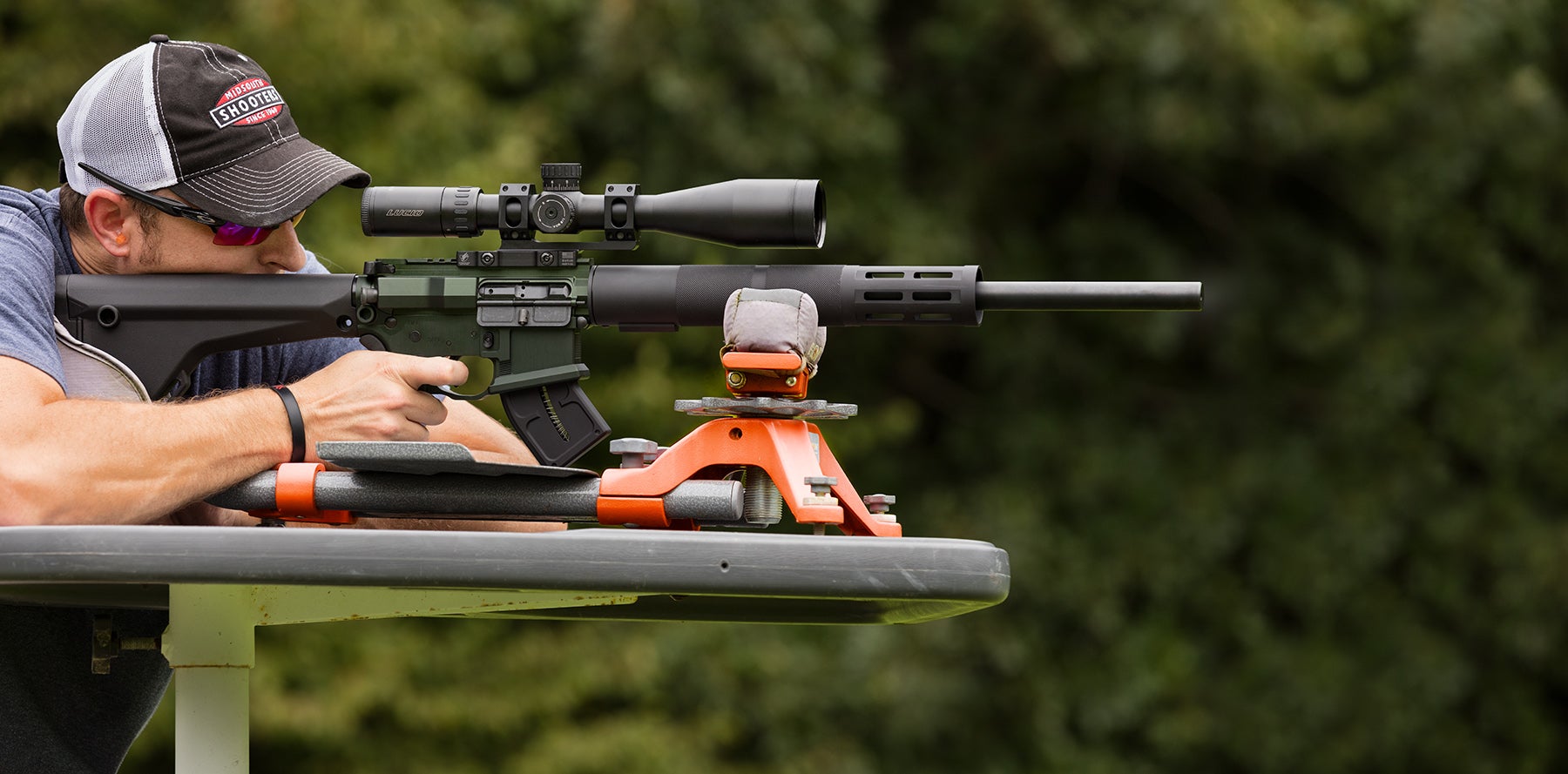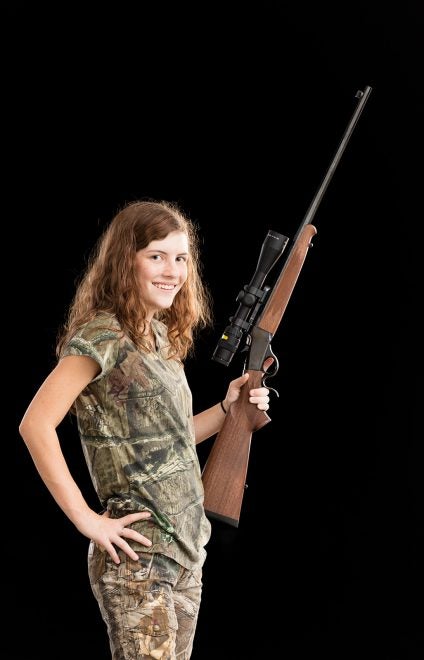Cold Bore Accuracy vs. Small Groups
Oleg Volk 10.31.16

Recently, I had an opportunity to test four small bore caliber rifles: Winchester 1885 falling block 22WMR, Franklin Armory AR in 17WSM, Armscor 22TCM bolt action and Volquartsen Evolution 5.56mm gas-operated semiauto. All four rifles produced extremely accurate first shots from cold bore, reliably hitting the exact points of aim at 100 yards. Once more than one shot was fired, the results became less similar.
The simple 1885 falling block, firing a small charge through a fairly heavy barrel, shot groups around 0.5″ with Federal 50gr soft points and around 1″ with Federal 40gr soft points. The groups didn’t change even after the barrel got fairly warm.
Armscor bolt action would put the first two shots from the cold bore close enough to each other to overlap the bullet holes. The rest of the 5-shot magazine would open the group to nearly 2″. Assuming poor technique, we re-shot the test groups without cooling the rifle. After about twenty shots, the “group” became a 2.5″ vertical string with nearly no horizontal dispersion. Close examination of the rifle showed that the barrel wasn’t properly freefloated or bedded, problems that can be solved with some investment of time. Once the barrel cooled to ambient temperature, two shots again overlapped at the point of aim, suggesting good quality barrel and consistent ammunition.
The Franklin Armory FT17L, made with a rather heavy barrel, would give a sub-MOA 4-shot group but open up to 1.5″ with the fifth round. If a couple of minutes between shots were allowed to cool the gun, it would shoot a very small group with all five shots. For sustained accuracy, both the 17WSM AR and the 22TCM bolt action proved inferior to the single-shot Browning. But on the first two rounds, the Armscor beat it and FT17L matched it despite burning rather more powder per shot. It’s not clear why FT17L changes its behavior after four shots: the makers claim more consistent groups and my sample may be non-representative.
It would be easy to make the assumption that simpler designs with less hot cartridges are generally accurate, but the Volquartsen Evolution 5.56mm defies that theory. With Federal Gold Match 69gr ammunition, it produced 0.5MOA groups on demand, cold bore or warm. Further defying conventional wisdom, it produced smaller groups from the fast twist barrel with 55gr Federal Fusion hunting ammunition, again cold bore or warm.
How much should we read into groups fired for evaluation? The answer depends on the intended use. For example, FT17L and Armscor rifles are both well suited for small game hunting, since that seldom needs sustained fire but does require decent first-shot accuracy. Neither would be the ideal choice for long-range varminting to reduce a prairie dog town over an afternoon. While 1885 would technically work for the sustained fire role, it would require good technique to avoid losing the sight picture while reloading. The 5.56mm Evolution, being both first shot accurate and capable of repeated performance, would fit both roles, but it’s a long, hefty gun and therefore more suited for varminting from a fixed position than for walking around the woods, the role in which 1885 and the 22TCM BA would excel.
And what about rifles that aren’t cold bore accurate? Heavy barrel support weapons often have dispersion in the 4-5MOA range, but that group stays constant even over a 100 round belt fired over 90 seconds. Such results won’t bring small game to the table except at the closest range, but would be plenty adequate to keep amateur pyromaniacs from introducing your rooftop to thickened gasoline. We’ll cover such arms later this year.


